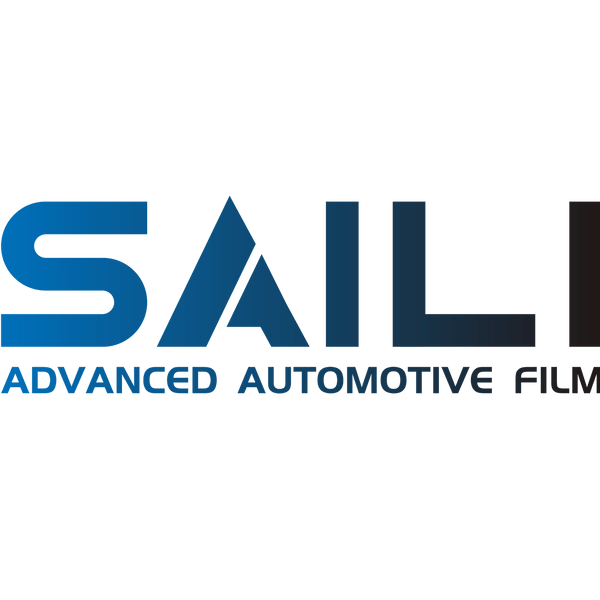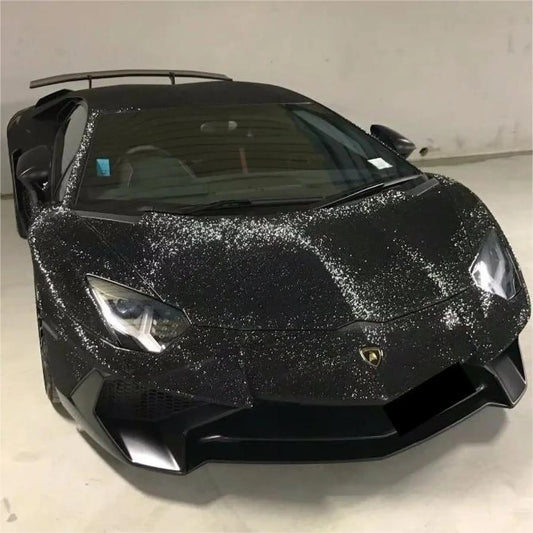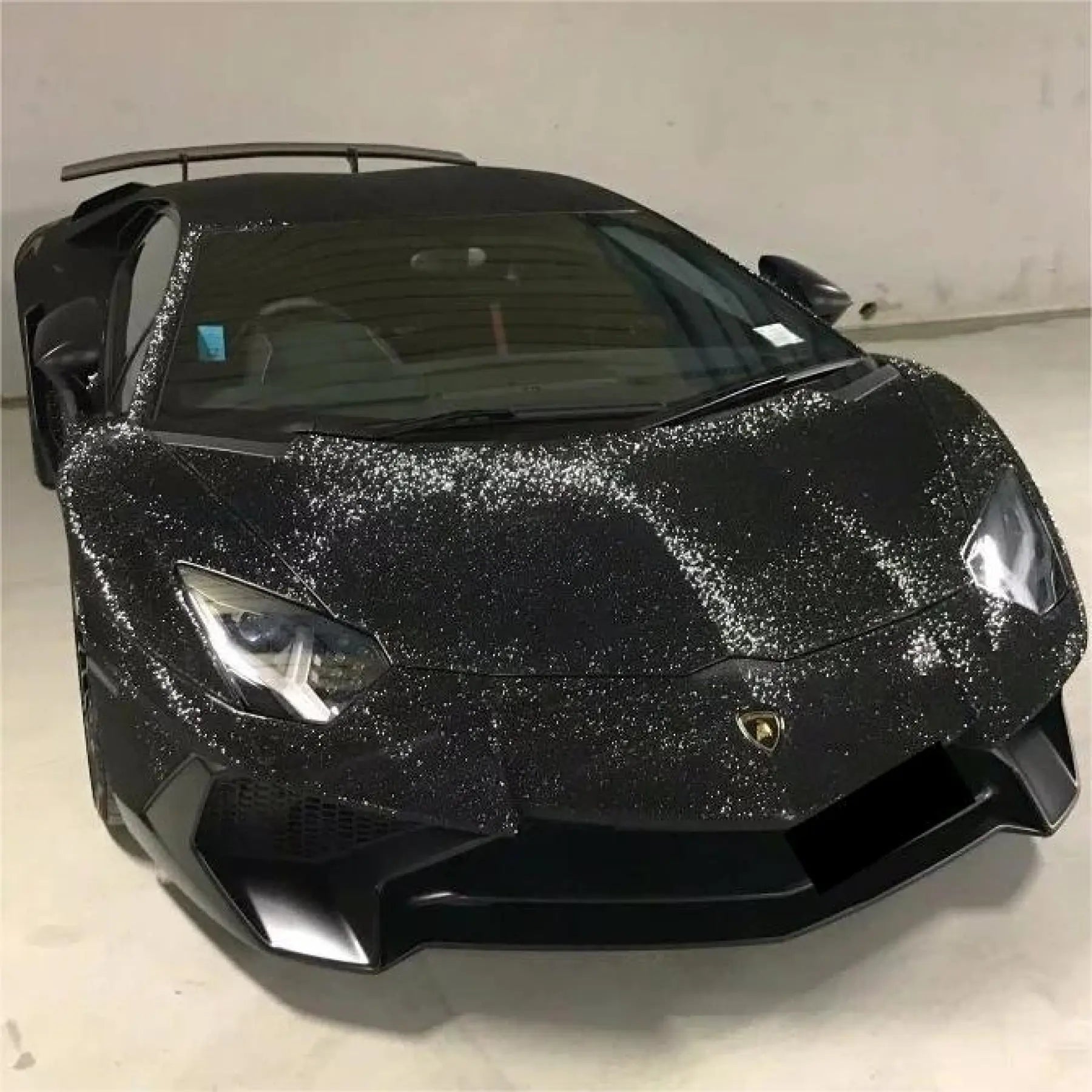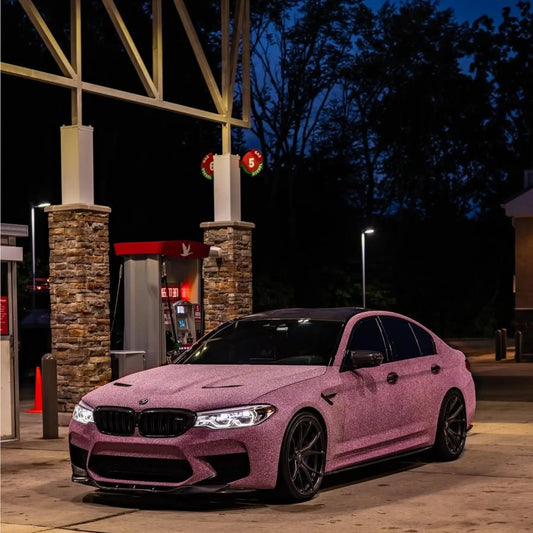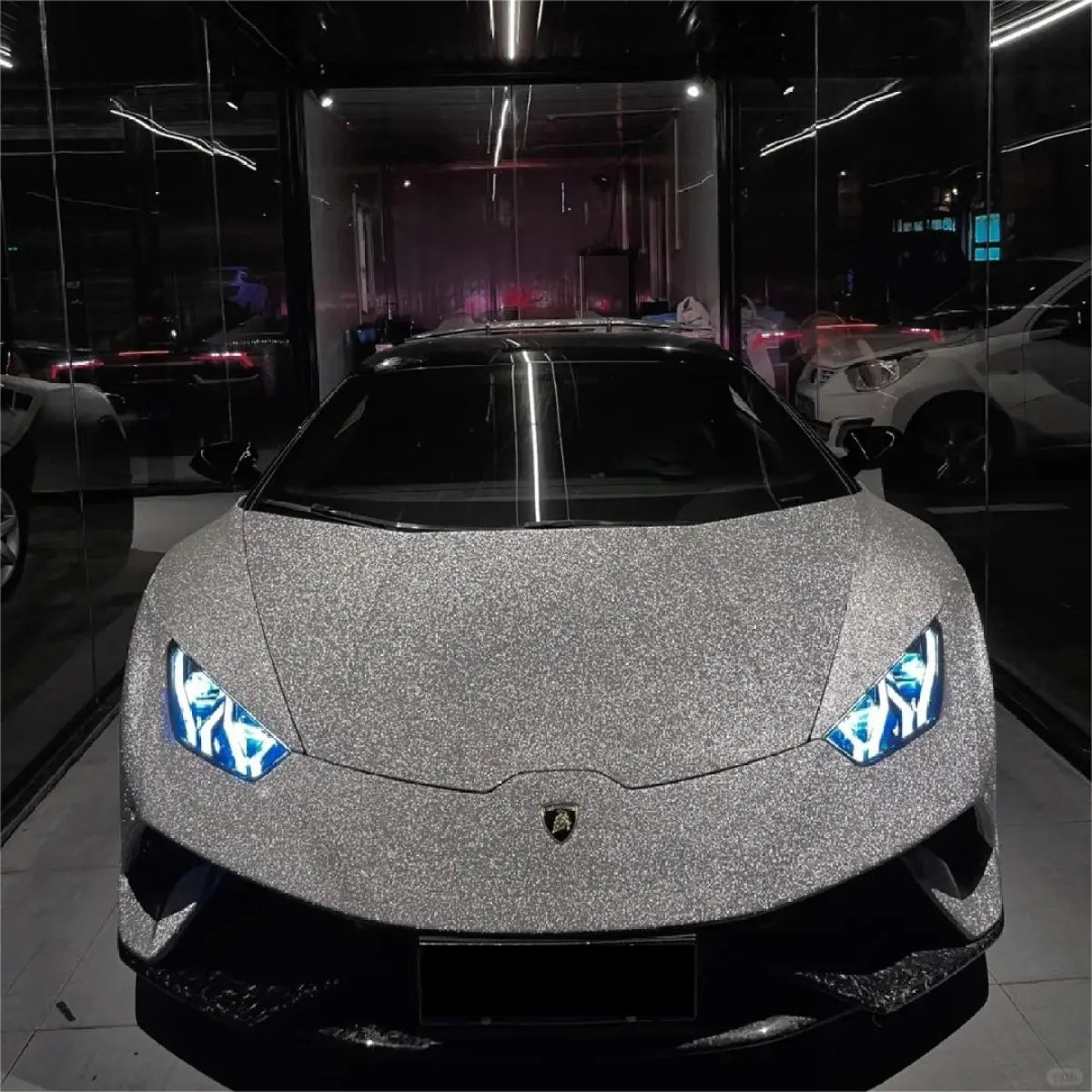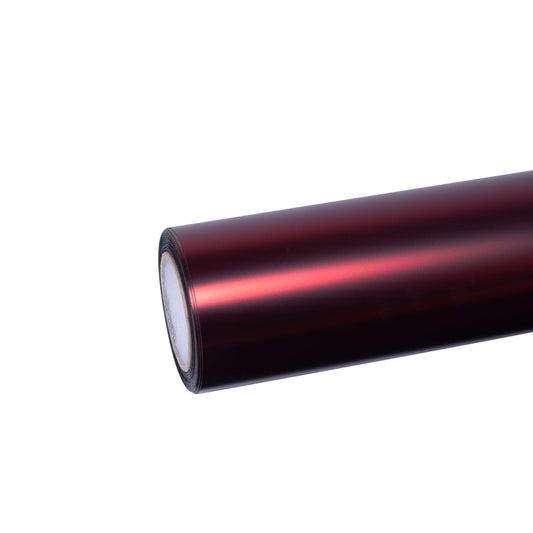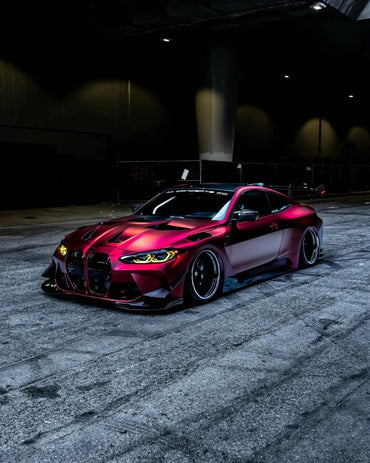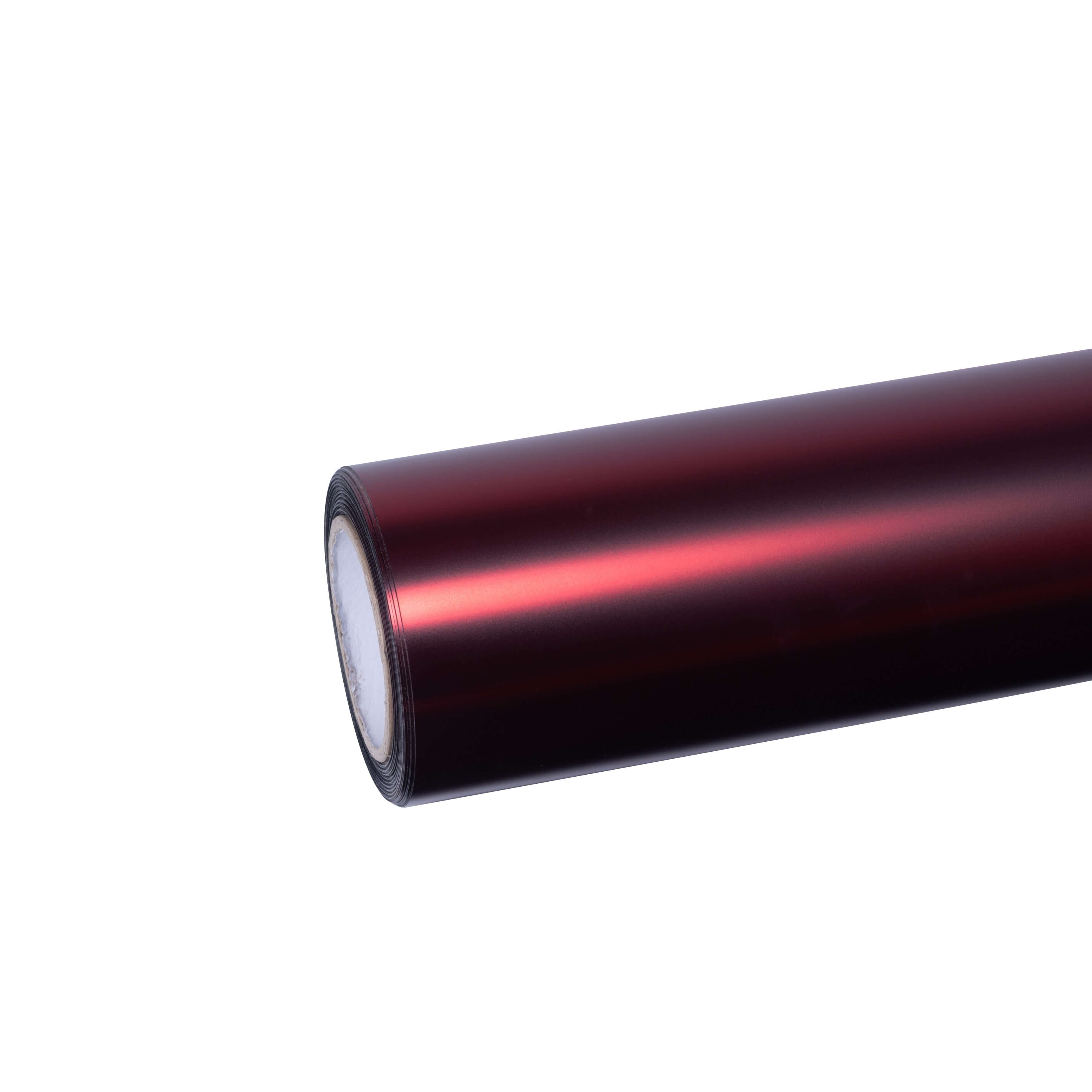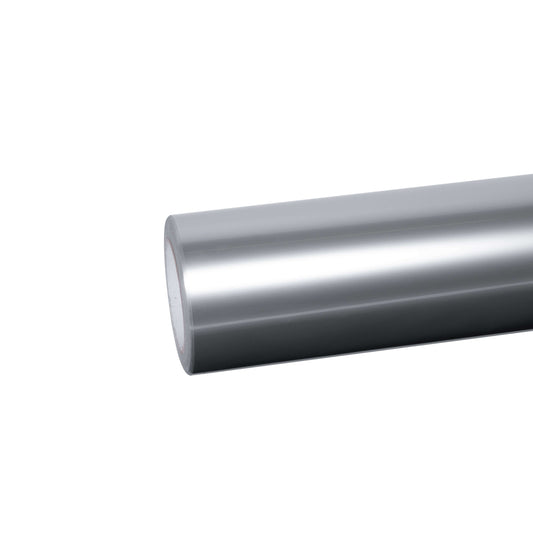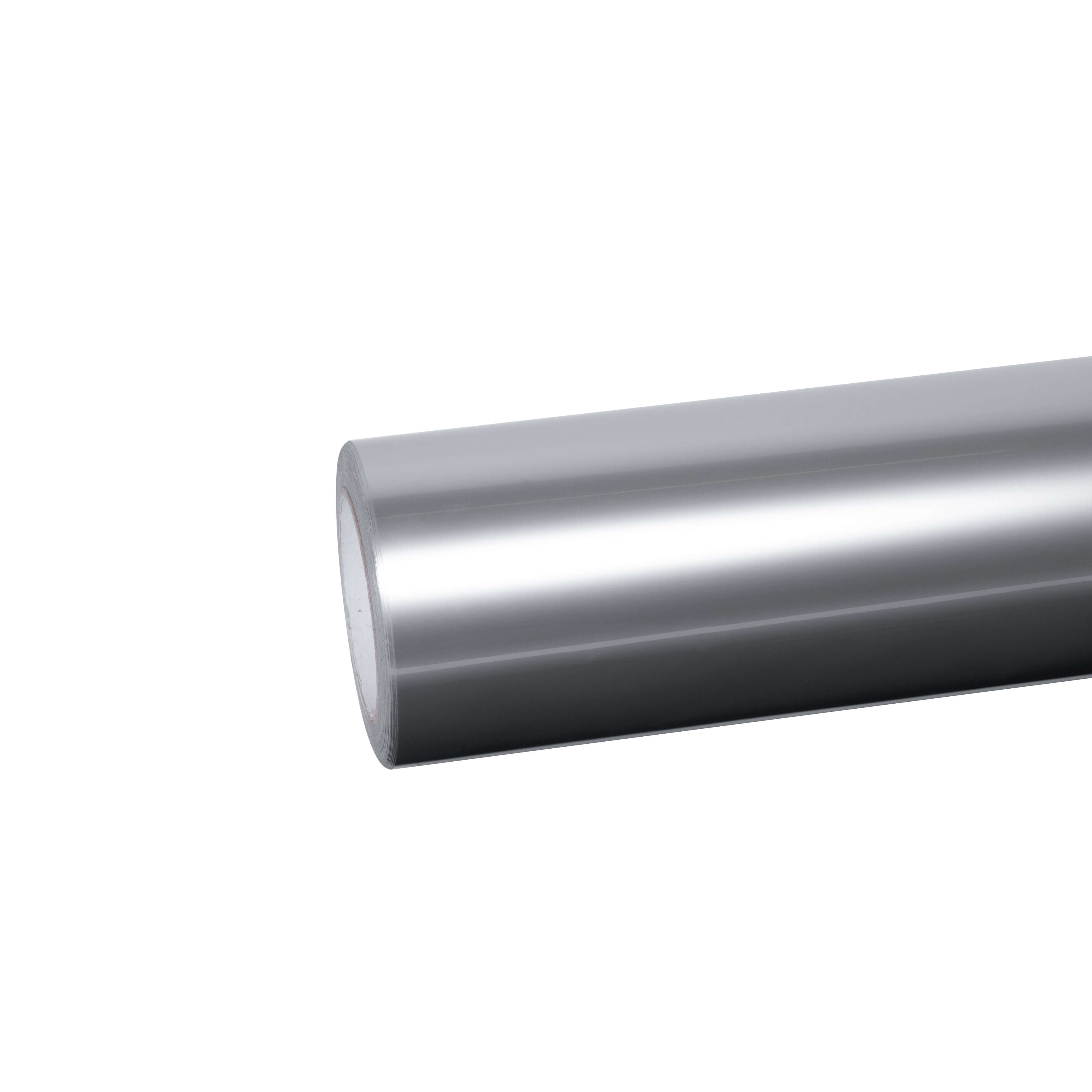Understanding UV Damage on Automotive Wraps
Ultraviolet radiation from sunlight penetrates vinyl wrap surfaces, breaking down the molecular structure of the material over time. This process accelerates in vehicles parked outdoors regularly, with unprotected wraps showing visible degradation within months rather than years.
The sun's UV rays affect different wrap finishes uniquely. Glitter sparkle wraps and metallic vinyl wraps may lose their reflective properties, while colored paint protection films can experience color shift and reduced clarity. Even premium materials require proper UV protection to maintain their original appearance.
According to recent industry research, vinyl wraps exposed to direct sunlight without protection can lose up to 40% of their color vibrancy within the first two years. This degradation not only affects aesthetics but also compromises the wrap's protective qualities, potentially exposing your vehicle's original paint to environmental damage.
Natural UV Protection Methods
Natural protection strategies focus on preventive measures that minimize direct sun exposure without requiring additional products or coatings. These methods are cost-effective and suitable for all wrap types, from 3D carbon fiber wraps to liquid chrome finishes.
Strategic Parking Solutions
The simplest yet most effective natural protection method involves parking your wrapped vehicle in covered areas whenever possible. Garage storage provides complete UV shielding, while carports and shaded parking structures offer substantial protection during daytime hours.
For daily drivers without access to covered parking, seeking natural shade from trees or buildings reduces UV exposure significantly. However, avoid parking under trees that drop sap or have bird activity, as these contaminants can damage wrap surfaces and trap heat, accelerating UV-related deterioration.
When garage storage isn't available, high-quality UV-resistant car covers provide portable protection. Look for breathable covers specifically designed for wrapped vehicles to prevent moisture accumulation while blocking harmful radiation.
Regular Maintenance and Cleaning
Proper cleaning removes dirt, dust, and contaminants that trap heat and intensify UV damage. Wash your wrapped vehicle every one to two weeks using pH-balanced car shampoo and soft microfiber towels. This regular maintenance prevents buildup that can accelerate degradation of both vinyl wraps and paint protection films.
The two-bucket washing method minimizes scratching while ensuring thorough cleaning. One bucket contains soapy water while the other holds clean rinse water, preventing dirt from being reapplied to the wrap surface. Always rinse the vehicle first to remove loose debris before beginning the washing process.
Avoid automatic car washes with abrasive brushes, which can scratch delicate wrap finishes like ultra-matte wraps and crystal vinyl wraps. Instead, opt for touchless car washes or hand washing to preserve the integrity of your wrap investment.
After washing, dry your vehicle completely using premium microfiber drying towels with at least 800 GSM (grams per square meter). Thorough drying prevents water spots and reduces the risk of moisture penetrating wrap edges, where adhesive degradation often begins.
Advanced Coated Protection Solutions
While natural methods provide baseline UV protection, advanced coating solutions offer superior defense against ultraviolet radiation, environmental contaminants, and minor physical damage. These professional-grade treatments create sacrificial layers that absorb UV exposure while preserving the underlying wrap material.
Ceramic Coating for Vinyl Wraps
Ceramic coatings designed specifically for automotive vinyl represent one of the most popular protection solutions in 2025. These liquid polymer treatments bond with the wrap surface at a molecular level, creating a hydrophobic layer approximately 10 times stronger than traditional automotive clear coats.
The ceramic coating process provides multiple benefits beyond UV protection. The hydrophobic properties cause water to bead and roll off the surface, reducing water spots and making regular cleaning significantly easier. Dirt, dust, pollen, and road grime have difficulty adhering to ceramic-coated surfaces, keeping your dual-color dream vinyl wrap or metallic series finish cleaner between washes.
Application requires proper surface preparation and typically costs less than overlaying paint protection film, making ceramic coating an economically attractive option. The coating needs reapplication every three to four years depending on vehicle usage and maintenance practices, providing long-term protection without permanent modification.
Ceramic coatings work excellently on all Sailifilm products, including glitter sparkle car wraps, rainbow laser series, and colored paint protection films. The transparent nature of ceramic coatings preserves the original finish characteristics while adding depth and shine to glossy surfaces.
Paint Protection Film Over Vinyl Wraps
Installing clear TPU paint protection film over vinyl wraps represents the premium protection solution for enthusiasts seeking maximum durability and longevity. This dual-layer approach combines the aesthetic versatility of vinyl with the superior defensive properties of paint protection wrap.
TPU paint protection films offer self-healing properties that automatically repair minor scratches and swirl marks when exposed to heat or sunlight. This advanced polymer technology provides resistance against rock chips, road debris, insect impacts, and environmental contaminants that would otherwise damage vinyl surfaces.
The application process requires professional installation due to the precision needed when layering films. However, the investment pays dividends for high-value wraps like liquid chrome finishes or custom best-sellers that would be costly to replace. Top-tier paint protection films come with manufacturer warranties extending up to 10 years, offering peace of mind and long-term value.
When combined with Sailifilm's colored paint protection film collection, this approach provides both aesthetic customization and maximum UV defense. The clear TPU layer blocks harmful radiation while allowing the vibrant colors of your chosen finish to remain visible and protected.
UV-Resistant Sealants and Spray Protectants
Specialized vinyl wrap sealants offer middle-ground protection between basic maintenance and professional ceramic coating. These spray-on products contain ceramic properties and UV inhibitors that create a protective barrier lasting approximately 90 days per application.
Application is straightforward: spray the product onto clean, dry wrap surfaces and wipe with microfiber towels. The hydrophobic properties enhance water beading while the UV blockers reduce radiation penetration. Multiple applications intensify protective effects, making sealants ideal for maintaining wraps between more extensive protection treatments.
These sealants work safely on all wrap finishes, including matte and satin surfaces that cannot accept traditional waxes. They're particularly effective for maintaining the appearance of sample kits when testing new wrap styles or colors.
Material-Specific Protection Considerations
Different wrap materials require tailored UV protection approaches based on their composition and finish characteristics. Understanding these distinctions ensures optimal protection without compromising the unique properties that make each wrap type special.
Protecting Metallic and Chrome Finishes
Metallic vinyl wraps and liquid chrome finishes demand special attention because UV degradation affects their reflective properties more visibly than solid colors. The metallic flakes or chrome particles within these wraps can oxidize under prolonged UV exposure, creating a dull or hazy appearance.
For these finishes, combining ceramic coating with regular sealant applications provides comprehensive protection. The ceramic layer prevents direct UV contact with metallic elements, while periodic sealant applications maintain hydrophobic properties and enhance shine between ceramic coating renewals.
Ultra-Matte and Satin Wrap Protection
Ultra-matte wraps require UV protection products specifically formulated for non-glossy finishes. Traditional car waxes contain glossing agents that alter the matte appearance, creating undesirable shine spots.
Matte-safe ceramic coatings and sealants preserve the unique texture while providing UV defense. These products protect against both radiation damage and the accumulation of oils and fingerprints that show prominently on matte surfaces.
Glitter and Sparkle Vinyl Protection
Glitter sparkle car wraps feature embedded reflective particles that create eye-catching visual effects. Protecting these wraps requires products that won't fill the textured surface or diminish sparkle intensity.
Spray sealants work exceptionally well for glitter finishes because they provide even coverage without settling into textured areas. When applying ceramic coating to sparkle wraps, ensure the installer uses techniques appropriate for textured surfaces to maintain the three-dimensional appearance.
TPU Paint Protection Film Care
Sailifilm's colored paint protection films and TPU paint protection wraps benefit from minimal additional coating due to their inherent UV resistance. However, ceramic coating can still enhance their hydrophobic properties and ease of maintenance.
These films already contain UV stabilizers and inhibitors within their formulation, providing baseline protection superior to standard vinyl. Adding a ceramic layer creates a dual-defense system ideal for vehicles in harsh climates or those parked outdoors regularly.
Climate-Specific Protection Strategies
Geographic location and local climate conditions significantly influence UV protection requirements. Vehicles in different regions face varying radiation intensity, temperature fluctuations, and environmental challenges that affect wrap longevity.
High UV Index Regions
Areas with intense sunlight year-round, such as southern latitudes and desert climates, require aggressive UV protection strategies. In these environments, combining covered parking, ceramic coating, and regular sealant applications becomes essential rather than optional.
Consider applying paint protection film over vinyl in high-UV regions, particularly for horizontal surfaces like hoods, roofs, and trunk lids that receive direct overhead sun exposure. These areas experience the most intense radiation and show UV damage first.
Coastal and High-Humidity Environments
Coastal regions present dual challenges: strong UV radiation reflected from water surfaces and salt air that accelerates degradation. Vehicles with car vinyl wrap in these areas benefit from weekly washing to remove salt deposits combined with ceramic coating for continuous UV and environmental protection.
The hydrophobic properties of ceramic-coated wraps prove particularly valuable in high-humidity climates, preventing moisture accumulation at wrap edges where lifting often begins.
Moderate Climate Considerations
Even regions with moderate sunlight exposure require UV protection, as cumulative radiation damage occurs regardless of climate intensity. The difference lies in protection frequency—moderate climates may allow six-month intervals between sealant applications rather than quarterly treatments.
Long-Term Maintenance for UV Protection
Establishing a consistent maintenance routine maximizes the effectiveness of both natural and coated protection methods. This systematic approach ensures your investment in wrapping tools and premium materials yields optimal longevity.
Monthly Inspection Protocol
Conduct monthly visual inspections of your wrapped vehicle, paying particular attention to edges, seams, and high-exposure areas. Look for signs of fading, edge lifting, or surface changes that indicate UV damage progression.
Early detection allows for targeted treatment before minor issues become major problems requiring wrap replacement. Check that ceramic coatings or sealants maintain their hydrophobic properties by observing water beading during washing.
Quarterly Protection Renewal
Reapply UV-resistant sealants every 90 days to maintain continuous protection between ceramic coating renewals. This schedule provides overlapping protection layers that prevent gaps in UV defense.
For vehicles with particularly valuable or custom wraps from collections like the crystal vinyl wrap series, consider professional detailing quarterly to ensure protection products are applied correctly and evenly.
Annual Professional Assessment
Schedule annual professional inspections of both the wrap and protection coatings. Expert installers can identify deterioration invisible to untrained eyes and recommend preventive interventions before damage becomes irreversible.
Professional assessment proves especially valuable for complex installations involving multiple wrap types, such as vehicles featuring both 3D carbon fiber accents and dual-color dream vinyl panels.
Cost-Benefit Analysis of Protection Methods
Understanding the financial implications of various UV protection strategies helps you make informed decisions aligned with your budget and wrap investment level.
Natural Methods: Minimal Cost, Maximum Effort
Strategic parking and regular maintenance require minimal financial investment but demand consistent effort and time commitment. These methods work well for budget-conscious owners or those with readily available covered parking.
The primary costs involve quality cleaning supplies (pH-balanced shampoo, microfiber towels) and potentially a UV-resistant car cover. Total investment typically ranges from $50-$200, making this approach accessible to all wrap owners.
Ceramic Coating: Moderate Investment, Long-Term Value
Professional ceramic coating application typically costs between $500-$1,500 depending on vehicle size and coating quality. This investment provides three to four years of superior protection, averaging $125-$375 annually—substantially less than wrap replacement costs.
DIY ceramic coating kits reduce upfront expenses to $100-$300 but require proper application technique to achieve professional results. Improper application can create uneven protection or cosmetic imperfections.
Paint Protection Film Overlay: Premium Protection, Premium Price
Installing clear TPU paint protection film over vinyl represents the highest-cost option, with full-vehicle applications ranging from $2,000-$6,000. However, this approach offers unmatched protection and can extend wrap life by 5-8 years, potentially exceeding the lifespan of the vinyl itself.
For selective coverage of high-impact areas like front bumpers, hood leading edges, and door edges, costs range from $500-$1,500—a more accessible entry point for premium protection.
Common UV Protection Mistakes to Avoid
Even with good intentions, wrap owners sometimes employ protection methods that inadvertently cause damage or reduce effectiveness. Avoiding these common pitfalls ensures your UV protection efforts yield positive results.
Using Incompatible Products
Not all automotive protection products suit vinyl wraps. Petroleum-based cleaners, harsh degreasers, and products containing silicone can damage wrap adhesive or create discoloration. Always verify product compatibility with vinyl materials before application.
Similarly, ceramic coatings designed for automotive paint may not bond properly with vinyl surfaces or could cause finish alterations. Use only products specifically formulated for vinyl wrap protection.
Neglecting Edge Protection
UV damage often begins at wrap edges where material meets substrate. These vulnerable areas require special attention during cleaning and coating application to prevent moisture intrusion and adhesive degradation.
When applying sealants or ceramic coatings, ensure complete coverage extending slightly beyond visible wrap edges for comprehensive protection.
Over-Applying Protection Products
More product doesn't equate to better protection. Excessive sealant or ceramic coating application can create hazy residue, streaking, or uneven coverage that detracts from wrap appearance. Follow manufacturer instructions precisely for optimal results.
Ignoring Environmental Contaminants
UV protection doesn't eliminate the need to remove bird droppings, tree sap, tar, or insect residue promptly. These contaminants contain acids and chemicals that penetrate protection layers, causing permanent damage if left unaddressed.
Remove environmental contaminants within 24-48 hours using appropriate cleaning solutions to prevent etching or staining underneath protection coatings.
Extending Wrap Life Through Comprehensive Protection
Combining multiple protection strategies creates a comprehensive defense system that maximizes vinyl wrap longevity while maintaining aesthetic appeal. This integrated approach addresses UV radiation alongside other environmental threats.
The Layered Protection Approach
Implement a multi-tier protection strategy: covered parking as primary defense, ceramic coating as secondary protection, and regular sealant application as tertiary maintenance. This redundancy ensures continuous protection even when individual elements require renewal.
For ultimate protection, add clear paint protection film as the outermost layer, creating a four-tier defense system suitable for premium wraps or vehicles in harsh environments.
Seasonal Protection Adjustments
Adapt protection routines to seasonal changes. Increase sealant application frequency during summer months when UV intensity peaks, and be vigilant about removing winter road salt and chemicals that accelerate degradation.
Spring and fall provide ideal opportunities for comprehensive cleaning, inspection, and protection renewal before entering high-stress summer or winter seasons.
Documentation and Record Keeping
Maintain detailed records of wrap installation dates, protection application schedules, and maintenance activities. This documentation helps establish effective maintenance intervals and provides valuable history if warranty claims become necessary.
Photography documenting wrap condition over time reveals subtle changes that might otherwise go unnoticed, allowing proactive rather than reactive maintenance.
Conclusion: Protecting Your Sailifilm Investment
Your choice of protection method depends on multiple factors: wrap type, budget constraints, climate conditions, and personal commitment to maintenance routines. Natural methods provide accessible baseline protection, while advanced coatings offer superior defense for those seeking maximum longevity and minimal maintenance effort.
For Sailifilm's diverse product range—from eye-catching rainbow laser series to durable TPU paint protection films—UV protection isn't optional; it's essential. Whether you select ceramic coating, paint protection film overlay, or consistent natural protection methods, implementing a comprehensive strategy preserves your investment and maintains that stunning appearance that turned heads from day one.
Remember that the most expensive protection method isn't necessarily the best choice for your situation. Assess your specific needs, local conditions, and wrap characteristics to develop a customized protection plan that delivers optimal results within your budget constraints.
Explore Sailifilm's complete collection of premium automotive wraps and protection films, and invest in proper UV protection to ensure your vehicle continues making powerful style statements for years to come. Your wrap represents more than a color change—it's an expression of personality and automotive passion deserving comprehensive care and protection.
Internal Links:
- Rainbow Laser Vinyl Wrap Collection
- Colored Paint Protection Film
- TPU Paint Protection Wrap
- Ultra-Matte Wrap Series
- Glitter Sparkle Car Wrap
- Metallic Vinyl Wrap
- 3D Carbon Fiber Wrap
- Liquid Chrome Wrap
- Crystal Vinyl Wrap
- Wrapping Tools
External Links:
